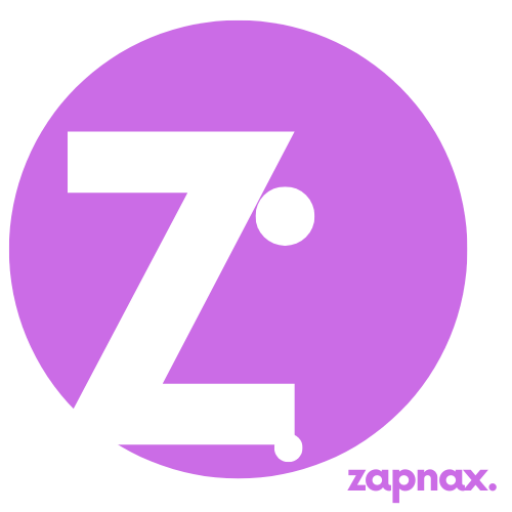Anúncios
Want a clear plan for how to learn apps quickly so you can stop guessing and start using new tools with confidence?
You’ll get a repeatable method that moves you from first launch to useful outcomes in short, practical steps. This guide blends simple guides, balance for healthy screen time, and tips for teamwork and data-driven insights. It also invites play so exploration stays fun and motivating.
Mobile software is reshaping work and play: apps drove massive revenue and creators, and services like YouTube, Fortnite, Zoom, and Google Maps show fast adoption in both entertainment and development workflows. You’ll see examples that match patterns you already know.
Use this as an educational, practical playbook. Protect privacy, check permissions, and treat these tips as adaptable steps rather than universal rules. By the end, you’ll have a mini checklist for future tools and a simple cycle—try, fix, repeat—that builds real experience without overwhelm.
Why learning apps fast matters today
Speed matters when a new tool must fit into your day without adding stress. You want measurable results, not months of setup. Set one clear outcome like “organize client notes in 10 minutes a day” and aim for that before expanding features.
Anúncios
Introduction: your context and goals
Saving ramp-up time reduces context switching and lowers stress. A short, focused sprint gets you from first launch to basic competence. That saves time and helps you make safer configuration choices.
How guides, balance, connect, insights, and play fit in
Use structured guides for step-by-step progress. Take breaks and mind posture to protect concentration. Connect with teammates in a controlled way and check sharing settings before inviting others.
- Apply insights: watch one metric, like completion rate.
- Experiment: play safely in a sandbox to explore features.
- Map core skills: navigation, search, and shortcuts first.
The state of apps in 2025 at a glance
“Mobile ecosystems are driving major revenue and shifting how people access information and services.”
Mobile app development is on pace to generate $613 billion this year. Software development roles are growing fast, and businesses now rely on app ecosystems for core workflows. That means new features arrive often; a fast, privacy-aware approach keeps you current without repeating onboarding.
The modern app landscape you’re navigating
Today’s app world mixes pocket-sized tools, browser services, and cross-platform products that act more like ecosystems than single programs. That mix shapes what you can build, share, and trust.
What an app means now: mobile, web, and cross-platform
Think of a mobile app or a web application as one focused tool that runs on phones, tablets, or in a browser. Many products offer cross-platform experiences that feel consistent across devices.
Native mobile apps give deeper hardware access and smooth performance. Browser-based web tools deliver fast updates and easy sharing. Choose based on the outcome you need.
Real-market signals: revenue, jobs, and usage
YouTube reached 253 million US viewers in February 2025, and mobile apps are set to generate $613 billion this year. Those numbers show strong user demand and clear business signals.
- Angry Birds passed 5 billion downloads, proving simple ideas scale.
- Fortnite’s creator base jumped sharply in recent years, showing engagement matters.
- Revolut’s rise highlights trust and security for finance applications.
Entertainment and utility: from Fortnite to Google Maps
Games like Fortnite teach engagement loops and creative play. Google Maps evolved from early mobile releases into a real-time navigation and local-business platform.
“Clear design and timely feedback keep users coming back.”
There’s no single best platform; your choice depends on goals, constraints, and whether offline features or rapid updates matter most.
A practical method to learn any app step by step
Begin by naming the job you want this program to complete and work backwards. That single outcome keeps the process focused and prevents feature bloat. Pick a task with real value, like “export a weekly report from the dashboard.”
Define your outcome: one clear job to be done
Write the goal in one sentence. Keep it measurable and small so you can finish it in a session.
Map the features: dashboards, menus, and key actions
Scan the main screen and list the features you need. Mark unknowns for investigation.
Micro-goals and time blocks: 20-40 minute learning sprints
Work in short blocks with one micro-goal each. This limits fatigue and creates quick wins.
Practice loop: try, err, search, repeat (Stack Overflow mindset)
- Attempt the task and note the exact error text.
- Search the message; read community answers and choose the safest fix.
- Repeat with your own sample data and record steps for reuse.
“A try, err, search, repeat loop builds practical programming skills faster than passive watching.”
Tip: Keep a tiny glossary and a few screenshots. Over time the process and tools you use become a portable roadmap for future projects and development work.
Choosing your learning path: no‑code, hybrid, or native
Different routes—no‑code, hybrid, and native—fit different project needs. Pick the path that matches your immediate goal, whether you want rapid validation, broader reach, or deep device access.

No‑code app builders: fast exploration and prototyping
No‑code builders let you prototype flows, test navigation, and validate ideas without heavy programming. Templates and marketplaces speed up mockups, making this ideal when your priority is user feedback.
Use no‑code when you need quick proof of concept and low setup cost.
Hybrid frameworks: one codebase, many platforms
Frameworks like React Native (JavaScript) and Xamarin (.NET/C#) let developers share much of the code across iOS and Android. That saves time, but you still need programming skills and attention to platform quirks.
Hybrid works well when you want cross‑platform reach with fewer resources for multiple native teams.
Native tools: platform depth and constraints
Native development with Xcode (Swift) or Android Studio gives the deepest access to device features and performance tuning. It demands more learning and maintenance, and app developers must follow App Store and Google Play rules for submission.
Native is best when device capabilities or performance are critical.
“Choose the path that matches your goal: validate fast with no‑code, scale across platforms with hybrid, or unlock device power with native.”
- Plan basic security and test on real devices before release.
- Start with a wireframe and one feature using sample data.
- Consider who will maintain the project—your team, contractors, or app developers.
There’s no single winner. Match your choice to timeline, team skills, and the long‑term development costs of your mobile application and web presence.
Your first three days with a new app: a mini playbook
Start with a tiny, practical plan that makes the first three days feel manageable and useful. This short process helps you get started without burning time or risking data. Keep sessions small and focused so learning becomes steady experience, not a marathon.
Day one: onboarding, settings, and safe sandboxing
Complete onboarding, review permissions, and enable two‑factor authentication if offered. Create a sandbox area and populate it with sample data so you never test with sensitive files.
Map one clear process from log‑in to a simple result and note which settings affect privacy and notifications.
Day two: build a tiny project that reflects your real use
Pick one small project—a single report, export, or note template—and build it using real-ish data. Set a timer for short sprints and stop before fatigue sets in.
Practical work beats passive watching. Hands‑on practice with your data cements skills faster than generic examples.
Day three: troubleshoot, review logs/help docs, refine shortcuts
- Collect issues and copy exact error messages.
- Search docs and community answers; try fixes in the sandbox.
- Refine shortcuts or gestures and capture a brief checklist of what worked.
Plan regular micro‑sessions if you intend deeper development or programming. For growth patterns and tips on building viral mini projects, see the viral mini‑app growth guide.
“Daily, focused practice and early releases shorten real-world development feedback loops.”
Patterns from successful apps you can copy when learning
Successful digital products share repeatable patterns you can copy as you explore new tools. Notice small signals and translate them into your own checklist. These patterns speed up familiarity and cut down trial‑and‑error.
Clarity and navigation
Google Maps shows clean layout, bold search, and step guidance. When you open a new mobile app, scan for a similar clear entry point.
Pick the main action and make it prominent in your notes. Fewer steps and clearer labels reduce mistakes and save time.
Engagement loops
Games like Fortnite and Angry Birds reward small wins. Copy that idea: set daily micro‑goals and track streaks. This builds steady momentum and keeps users returning.
Collaboration and scale
Zoom and YouTube teach testing and organization. Test audio/video, manage permissions, and group contacts or channels. These habits protect privacy and help teams scale work safely.
Security and finance flows
Revolut shows strong verification and clear transaction prompts. Enable robust authentication, double‑check confirmations, and treat finance features with caution.
- Borrow clear design cues like search and step markers.
- Use engagement as a tool for steady practice.
- Adopt scale habits for collaboration settings.
- Follow security patterns when handling money or permissions.
“Treat engagement as a learning tool, not just entertainment.”
Faster proficiency through smart setup
Smart preparation removes friction and keeps you focused on real tasks. A brief, safe setup routine cuts errors and speeds practical use. Keep privacy and ergonomics in mind while you prepare.
Onboarding checklists, templates, and sample data
Create a starter checklist that covers sign-in, two-factor, notifications, and privacy settings. Add a small sample dataset so you never test with sensitive files.
Import or build one template for your core task. A single template saves repeated steps and makes the process repeatable across programs and web services.
- Standardize file and app names for consistent search.
- Enable auto-backups and version history in your software.
- Keep a short “info” doc with help links and troubleshooting notes.
Shortcuts, gestures, and accessibility features that save time
Pick three shortcuts or gestures that replace multi-click actions. Write them down and practice until they become automatic.
Turn on accessibility features like larger text, voice control, or high-contrast mode when they reduce strain. Use password managers and authenticators so sign-ins stay quick and secure.
“Preparation, templates, and small habits cut friction and build real skills faster.”
how to learn apps quickly
Treat a new program like a puzzle: break it into bite-sized pieces and solve one at a time. This keeps sessions focused and reduces overwhelm. Use a sandbox or sample data so curiosity stays safe.
A quick-start checklist you can reuse
Quick-start checklist: define one outcome, review permissions, add sample data, complete onboarding, learn three shortcuts, run one small task, and write a two-line note about what to try next.
Balance screen time with purpose, play, and breaks
Set a clear purpose for each session and run a short timer (20–40 minutes). Take a five- to ten-minute break afterward.
Include a little play: explore one new feature in the sandbox. That playful test keeps learning enjoyable and builds useful ideas for real work.
Responsible use, privacy, and when to ask a pro
Respect privacy: disable unneeded integrations, review data-sharing settings, and store recovery codes safely before expanding usage.
When finance, health, or regulated data is involved, ask a professional reviewer. If your job depends on reliability, favor stable features and check release notes before updating.
“Focused practice and small, safe experiments create lasting skills faster than long, unfocused sessions.”
- Track learning in short summaries; these notes become a personal guide over years.
- Use a monthly review: one thing that worked, one that didn’t, and one way to reduce friction.
- If a task will take months, break it into small skills and celebrate each step.
Conclusion
Close each session with a short checklist so future work starts with clarity and less friction.
Use the steps here as a practical routine: name one outcome, map key screens, run short practice sprints, and keep brief notes. This approach helps you gain useful experience without long, unfocused sessions.
Balance matters: protect privacy, review store policies, and pause for breaks so digital work fits the rest of your life. When a project handles sensitive data or many stakeholders, ask experienced developers or security pros before scaling.
Mobile app development and app development change over years. Stay curious, read release notes, and apply design and programming habits that keep projects steady and safe.



